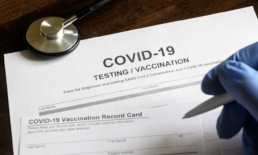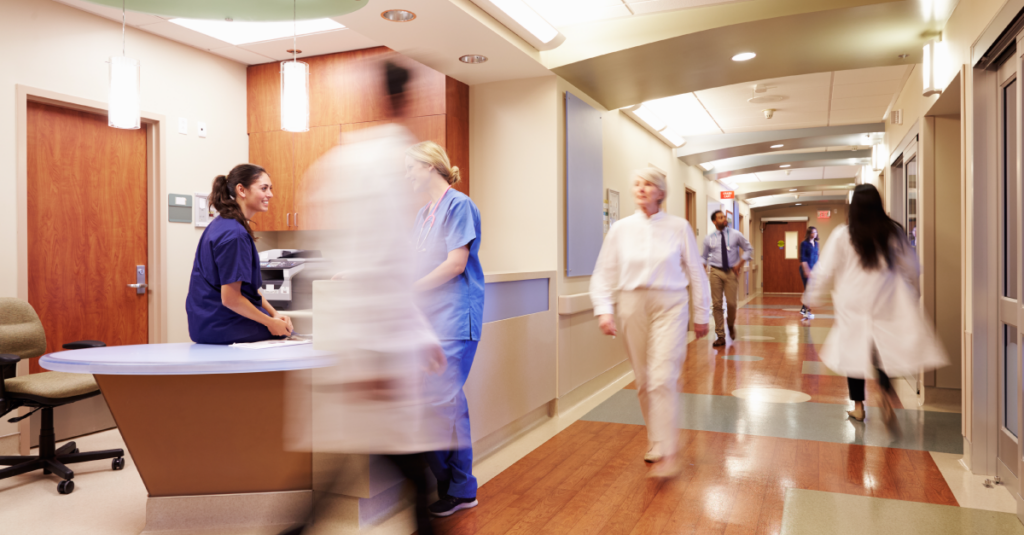In early September, the Biden-Harris administration announced COVID vaccination mandates for healthcare facilities are on the way for health care workers in the United States.
Vaccination requirements previously announced for nursing home workers will be expanded by the Centers for Medicare & Medicaid Services (CMS) to include approximately 50,000 CMS facilities. The Occupational Safety and Health Administration (OSHA) will also be adding to its earlier COVID-19 Healthcare Emergency Temporary Standard (ETS) with a large-employer mandate.
Faced with challenges from multiple directions, many health care facilities have been reluctant to be proactive with unvaccinated employees and risk exacerbating staffing shortages that are already at crisis levels. Broadening the vaccination requirement will help ease some of those concerns, but until the rules are released—expected by the end of October—many administrators are still taking a wait-and-see approach.
In this post, we’ll take a look at what you might expect, who will likely be impacted, and what steps your organization can take to be in compliance by the time the vaccine mandate comes into effect.
Health and safety is the ultimate goal
The new vaccine requirements were announced as part of President Biden’s action plan to get COVID-19 cases and the burden on health systems under control.
“Data show that the higher the level of vaccination rates among providers and staff, the lower the infection rate is among patients who are dependent upon them for care.”
CMS administrator Chiquita Brooks-LaSure in the announcement.
According to CMS data, nursing homes with vaccination rates of 75% or less tend to have higher rates of preventable COVID infection. When it comes to meeting that milestone, however, results are varied.
From data.cms.gov on October 21, 2021
As of mid-October, nearly 70% of staff in healthcare settings have been vaccinated nationally, on average. But there are leaders and laggards: While many states have already passed some form of vaccine and/or regular testing mandate for health care workers, the New York Times reported that in 10 states, vaccination rates for nursing home staff are still below 60%.
The CMS’s COVID vaccination mandates for healthcare facilities alone will apply to more than 17 million workers
The CMS vaccine requirements will apply to staff, contractors, and volunteers at Medicare and Medicaid-certified facilities across the country. This may include:
- Hospitals
- Dialysis facilities
- Ambulatory surgical settings
- Home health agencies
- Other inpatient and outpatient facilities
Organizations that don’t fall within this mandate may instead be affected by the OSHA standards. The large-employer mandate will apply to private companies with more than 100 employees. Declinations for religious or medical reasons may be applicable in some states, allowing healthcare workers to opt-out. However, weekly negative COVID tests may be required in these cases.
What health care settings might expect from the new rules
In the absence of official guidance, there are a lot of unanswered questions and it’s hard to make decisions about your facility’s vaccination strategy. But there are some likely details that can be shared amidst all the speculation.
To help keep confusion to a minimum, the CMS and OSHA rules are intended to be in alignment. “We have worked closely with our partners at OSHA to think about how the two rules, since there are two that could affect any facility, are really integrated,” said Dr. Lee Fleisher, chief medical officer at the CMS.
One key difference between the CMS and OSHA rules may be around testing. According to the administration’s action plan the OSHA is:
“Developing a rule that will require all employers with 100 or more employees to ensure their workforce is fully vaccinated or require any workers who remain unvaccinated to produce a negative test result on at least a weekly basis before coming to work.”
What’s less clear is whether there will be exemptions for health care facilities. “If you’re seeking care at a health-care facility, you should be able to know that the people treating you are vaccinated,” Biden said.
How to plan ahead for COVID vaccination mandates for healthcare facilities
Advice from the CMS is that facilities should act now to help ensure compliance when the rules do take effect. While the specific timeline is unknown, the ETS is expected to be approved shortly; estimates are that facilities will then have somewhere from 30 to 60 days in order to be compliant.
But what can you do to ease the transition and boost compliance among health care workers?
The reality is that mandates on their own have often proven to be effective, particularly in the midst of surging case numbers and hospitalizations.
While vaccine mandates that have been implemented on a company or state level led to some resignations, terminations, and suspensions, those have been relatively limited. As reported by the New York Times, at UCHealth System in Colorado 0.5% of its workforce was let go for noncompliance. At Kaiser Permanente, more than 92% of the workforce has been inoculated ahead of a December deadline.
The American Psychological Association suggested tailoring your approach to fit your workforce. “Meeting people where they are and tailoring interventions are vital steps for vaccine uptake across community members,” the association wrote in a community engagement guide.
Education and taking steps to combat misinformation can also make a significant difference. SHRM suggested treating misinformation in the workplace as a disagreement rather than a health or safety issue. One tip is to have employees speak with a colleague rather than a manager: “Hearing about vaccinations from a trusted, respected peer can help the employee become more open-minded about the COVID-19 vaccine.”
Where to find more information
There are many resources you may find helpful as you plan ahead. In addition to the links included throughout the article, you may want to check out:
- From Foley & Lardner LLP: Employer FAQs Regarding COVID-19 Vaccination and Testing Mandate for Federal Contractors and Large Employers (with 100 or More Employees)
- From Holland & Hart LLP: Vaccine Mandate for Healthcare Providers
- SHRM: How to Prepare for OSHA’s COVID-19 Vaccination Emergency Temporary Standard



